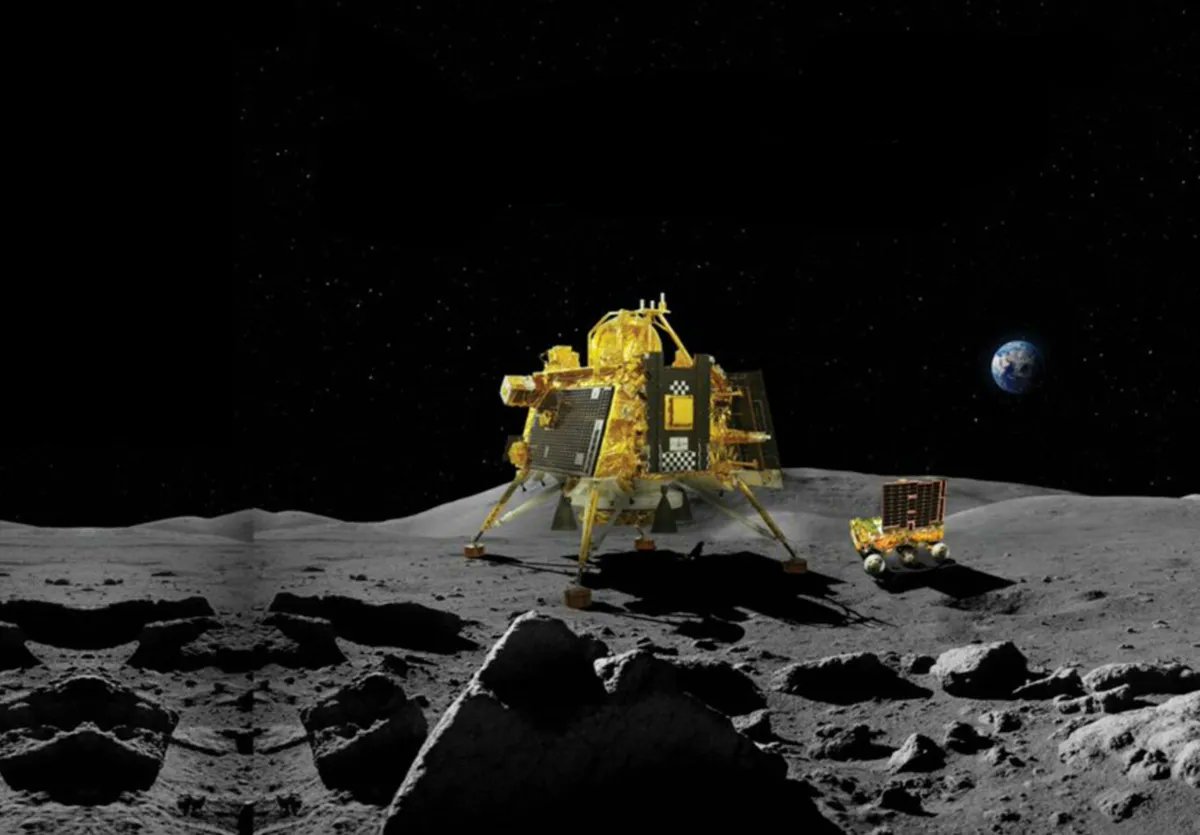In a powerful demonstration of international space collaboration, India and Japan have embarked on the next crucial step in their joint lunar mission, LUPEX (Lunar Polar Exploration), officially known as Chandrayaan-5 in India. As of May 2025, the mission has entered the preliminary design phase, following extensive planning and initial engineering tests.
Developed jointly by the Indian Space Research Organisation (ISRO) and the Japan Aerospace Exploration Agency (JAXA), LUPEX is focused on one of the most promising areas of planetary science the search for water and water-ice at the Moon’s south pole.
LUPEX: A Mission with Vision and Value
The LUPEX mission is expected to launch sometime in 2027 or 2028, riding aboard Japan’s H3 launch vehicle. The mission aims to deliver a 6.5-tonne spacecraft a combination of a Japanese lander and an Indian rover — to the Moon’s south pole, a region rich in scientific intrigue and potential for future human settlement.
The 350 kg rover, developed by ISRO, will carry seven sophisticated scientific instruments designed to explore the presence and characteristics of lunar water-ice both on the surface and in subsurface layers.
Key Mission Details:
- Mission Name: LUPEX / Chandrayaan-5
- Launch Window: 2027–28
- Launch Vehicle: Japan’s H3 rocket
- Payload: Seven scientific instruments
- Primary Objective: Study water-ice on the Moon
- Landing Site: Lunar south pole
- Weight: ~6.5 tonnes (combined lander and rover)
Design Phase Begins: Precision Planning for Harsh Conditions
The mission has now advanced to its preliminary design phase, where both ISRO and JAXA will focus on finalizing the technical architecture of the lander and rover. This includes the design of systems to withstand extreme thermal fluctuations, low solar exposure, and complex terrain at the lunar poles.
Asoh Dai, Project Manager at JAXA, confirmed that instrument selection is complete, and that early testing of engineering models has progressed well. This design phase will ensure compatibility across hardware developed in different countries and optimize the scientific instruments for long-term lunar operations.
Why the Moon’s South Pole? The Water Factor
The Moon’s south pole has long been a target for space agencies because of the permanently shadowed regions found in deep craters. These regions, untouched by sunlight for billions of years, may contain significant deposits of frozen water.
This mission is especially crucial because:
- Water is key for supporting life, both human and robotic.
- Water can be split into hydrogen and oxygen for use as rocket fuel.
- Discovering water reserves could enable long-term lunar bases.
The LUPEX rover will utilize ground-penetrating radar, spectrometers, and thermal sensors to detect and analyze the depth, concentration, and purity of any water-ice discovered.
An Example of Asia’s Growing Space Collaboration
LUPEX symbolizes more than just scientific discovery — it reflects the growing technological partnership between India and Japan in the field of space exploration. It also sets the stage for a broader Asian presence in global space efforts.
JAXA’s contributions include the lander system and the rocket, while ISRO provides the rover and core instruments. The division of responsibilities allows each agency to focus on its strengths while coordinating mission-critical decisions.
This partnership may also lay the foundation for future collaborative missions to Mars or deep space, showcasing a regional model of space cooperation.
Looking Ahead: Timeline and Future Prospects
With the design phase underway, here’s what the tentative timeline looks like:
- 2025: Design finalization and subsystem tests
- 2026: Integration and advanced environmental testing
- 2027–2028: Launch and lunar insertion
- 2028: Surface operations begin, lasting several lunar days (weeks)
If successful, LUPEX will not only enhance our understanding of the Moon but also establish India and Japan as key players in global lunar strategy.
Conclusion: Toward Sustainable Exploration of the Moon
The LUPEX or Chandrayaan-5 mission marks a significant step toward sustainable and collaborative space exploration. As nations look beyond Earth for critical resources and new frontiers, missions like LUPEX demonstrate how shared knowledge, joint investments, and common goals can accelerate progress.


